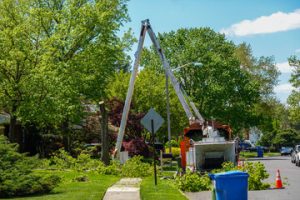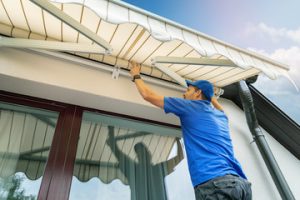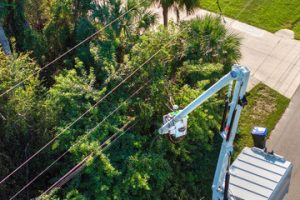When a tree is damaged or dies, it’s often necessary to remove it. This can be a big job, and it must be carefully evaluated before beginning.

First, find out if the tree is your responsibility or not. Tree Removal Worcester can evaluate the situation and provide the necessary equipment for removal.
Whether trimming a branch or removing an entire tree, safety is non-negotiable. Ignoring proper safety protocols can lead to severe injuries, property damage, and even death. This is why it’s always a good idea to leave tree removal to professional arborists. They have the expertise, specialized equipment, and insurance coverage to ensure the job is done safely and correctly.
A variety of factors can call for tree removal, including storm damage. But the need to take down a tree may also occur if it’s ill-placed in your yard, growing too close to power lines or your house; if it is diseased or infested with pests; or if its roots have grown into your sewer line and threaten to block access to it.
When performing any type of tree work, it’s essential to clear the surrounding area of debris. This is especially important if children or pets might wander near the area. It’s also smart to place warning tape or cones around the work zone to make it as obvious as possible that it’s a dangerous spot.
Once all of the debris is removed, cleanup crews can then focus on repairing any lingering damage caused by fallen branches or trunks. For example, they can repair roofs that have been ripped apart by falling trees or limbs, clear driveways that have been blocked by fallen branches or trunks, and even remove any contaminated soil that may have accumulated beneath the affected tree.
Aside from ensuring that all cleanup is performed safely, professional arborists can also help prevent future emergencies by providing advice and recommendations on the health of your trees. By taking measures such as pruning or cabling, you can extend the life of your trees and protect your home from unnecessary risks.
Clear the Area
Trees are a vital part of our natural environment, helping to clean the air, provide shade and shelter, and support wildlife. However, they can also be a major headache when they are overgrown and start to pose a safety risk by dropping branches or falling over completely. Whether it is due to overgrowth, a lack of maintenance, or an impending storm, there are times when tree removal becomes necessary.
When you’ve decided it is time to remove a tree, there are several things you can do to prepare the area and make the process easier for yourself and the team you hire. This can be as simple as calling the utility company to find out if there are any underground lines that could be damaged during the removal process. You can also move any vehicles, sheds, or other structures away from the tree to help prevent damage during the cutting process.
You should also clear the area around the tree to ensure there is plenty of room for it to fall and land flat on the ground. Additionally, it is a good idea to clear any other valuable plants and trees in the vicinity of the removed tree so they are not accidentally damaged.
If you have a tree that is located in a tight or cramped space, it may require special equipment such as a crane to remove it. It’s important to discuss this with the tree removal professionals to ensure you know what is required.
It is also a good idea to contact your neighbors and give them a heads-up about the tree removal project. This will let them know to expect noise, dust, and traffic delays in their neighborhood.
Prepare the Tools
Trees are a beautiful part of any landscape, providing shade in summer and a place for children to swing. Unfortunately, due to disease or wind/ice storms, some trees must be removed. Whether the tree is dead, dying or has fallen and damaged a structure or power lines, proper preparation before the work begins is essential for everyone’s safety.
The most important thing to do is to clear the area surrounding the stump and any other affected areas of the property. The crew will need plenty of room as the leafy debris is cut off and dragged to the wood chipper. They’ll also need a large area for parked equipment such as cranes and bucket trucks. Having these spaces available will keep the process moving more quickly and efficiently.
Stumps are more than just an eyesore, they’re a tripping hazard and can interfere with mowing and landscaping efforts. Fortunately, there are a variety of methods to kill and remove a stump, so you don’t have to live with the unsightly reminder of a once-living beauty.
Traditional stump removal involves digging up the entire stump and root ball and filling in the hole. This is more time-consuming and labor intensive than other options, but it’s a great choice if the stump needs to be completely removed and you don’t mind the large hole that will be left behind. There are also commercial stump grinding formulas and chemicals that can be used as directed to kill the stump, prevent resprouting and help reclaim your yard. These products usually contain a mixture of fertilizers, such as potassium and/or sodium nitrates, along with herbicides like triclopyr, glyphosate or imazapyr.
Secure the Branches
While pruning trees is a great way to maintain the health and beauty of your landscaping, sometimes a tree removal is the best course of action. Especially if the tree is close to a home or power lines, it may be necessary to remove a sick or damaged tree to ensure safety.
To prevent heavy tree limbs from falling during the removal process, it’s important to secure them with a rope. To do this, you can use a rolling hitch or clove hitch knot to attach the rope to the tree.
Once the ties are secured, a chainsaw can be used to create a V-shaped notch on the side of the tree that you feel is the safest direction for it to fall. This will prevent the limb from catching anything or anyone underneath it.
Give People Plenty of Notice
It’s important to give people plenty of notice when performing tree removal, especially if you live in an urban area. Some neighbors and pedestrians may be concerned about a tree’s proximity to their houses, and it’s natural for them to want to protect themselves from the potential risk of damage during storms or other weather events.
While every homeowner would like to avoid having a tree removed, sometimes it’s just the best course of action for safety and property protection purposes. It’s hard to know when a tree is in danger until the very last minute, and while a professional can work with the tree to minimize its impact on your home, sometimes the best option is to remove the tree entirely.
Aside from the immediate safety risks, other reasons for removing trees can include damage or disease. Many diseases can be treated, but if the infection is too widespread or the damage is too severe, the best course of action may be to have the tree removed altogether.
Additionally, if a tree has sustained significant structural damage, such as extensive rot or split trunks, it’s likely to be unstable and may fall at any time, posing a threat to public safety and property. In such cases, it’s important to call for professional tree removal services as soon as possible.
Depending on the situation, you may need to apply for a permit before performing tree removal. In general, you’ll need to fill out an application and provide an evaluation from a Certified Arborist in order to receive your permit. Typically, the process takes less than two weeks, though it may take longer if additional information or documentation is required.




